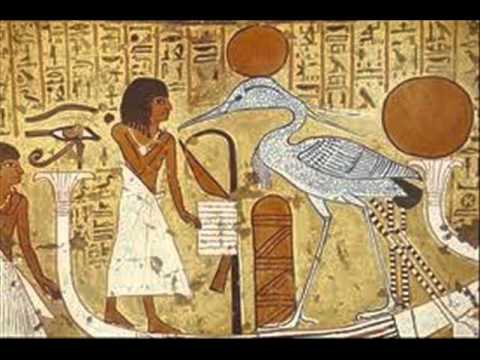The Hurrian songs are a collection of music inscribed in cuneiform on clay tablets excavated from the ancient Amorite Canaanite city of Ugarit which date to approximately 1400 BC. One of these tablets, which is nearly complete, contains the Hurrian hymn to Nikkal ,making it the oldest surviving substantially complete work of notated music in the world. While the composers’ names of some of the fragmentary pieces are known, h.6 is an anonymous work.
The complete song is one of about 36 such hymns in cuneiform writing, found on fragments of clay tablets excavated in the 1950s from the Royal Palace at Ugarit (present day Ras Shamra, Syria), in a stratum dating from the fourteenth century BC, but is the only one surviving in substantially complete form. An account of the group of shards was first published in 1955 and 1968 by Emmanuel Laroche, who identified as parts of a single clay tablet the three fragments catalogued by the field archaeologists as RS 15.30, 15.49, and 17.387. In Laroche’s catalogue the hymns are designated h. (for “Hurrian”) 2–17, 19–23, 25–6, 28, 30, along with smaller fragments RS. 19.164 g, j,n, o, p, r, t, w, x, y, aa, and gg. The complete hymn is h.6 in this list.A revised text of h.6 was published in 1975.
The melody below is performed by the very talented Michael Levy on the Lyre.
The tablet h.6 contains the lyrics for a hymn to Nikkal, a Semitic goddess of orchards, and instructions for a singer accompanied by a nine-stringed sammûm, a type of harp or, much more likely, a lyre. One or more of the tablets also contains instructions for tuning the harp.
The Hurrian hymn pre-dates several other surviving early works of music, e.g., the Seikilos epitaph and the Delphic Hymns, by a millennium, but its transcription remains controversial. A reconstruction by Marcelle Duchesne-Guillemin may be heard at the Urkesh webpage, though this is only one of at least five “rival decipherments of the notation, each yielding entirely different results”.
The arrangement of the tablet h.6 places the Hurrian words of the hymn at the top, under which is a double division line. The hymn text is written in a continuous spiral, alternating recto-verso sides of the tablet—a layout not found in Babylonian texts. Below this is found the Akkadian musical instructions, consisting of interval names followed by number signs. Differences in transcriptions hinge on interpretation of the meaning of these paired signs, and the relationship to the hymn text. Below the musical instructions there is another dividing line—single this time—underneath which is a colophon in Akkadian reading “This [is] a song [in the] nitkibli [i.e., the nid qabli tuning], a zaluzi… written down by Ammurabi”. This name and another scribe’s name found on one of the other tablets, Ipsali, are both Semitic. There is no composer named for the complete hymn, but four composers’ names are found for five of the fragmentary pieces: Tapšiẖuni, Puẖiya(na), Urẖiya (two hymns: h.8 and h.12), and Ammiya. These are all Hurrian names
The tablet is in the collection of the National Museum of Damascus.
